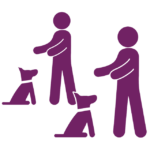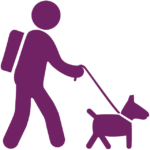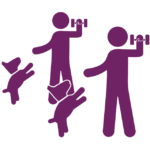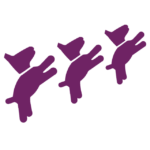PRIVATE DOG
TRAINING
Address Unwanted Ones
In the first part of this how to train your dog to down series, we established the movement of Down using the food lure. The only words said were your conditioned reinforcers, “Yes” and “Good” and your release word (“Finish”, “Break”, etc). “Down” was not yet said.
Now that your dog is familiar with the desired movement and the “L” shape your hand makes, let’s attach the cue, “Down.”
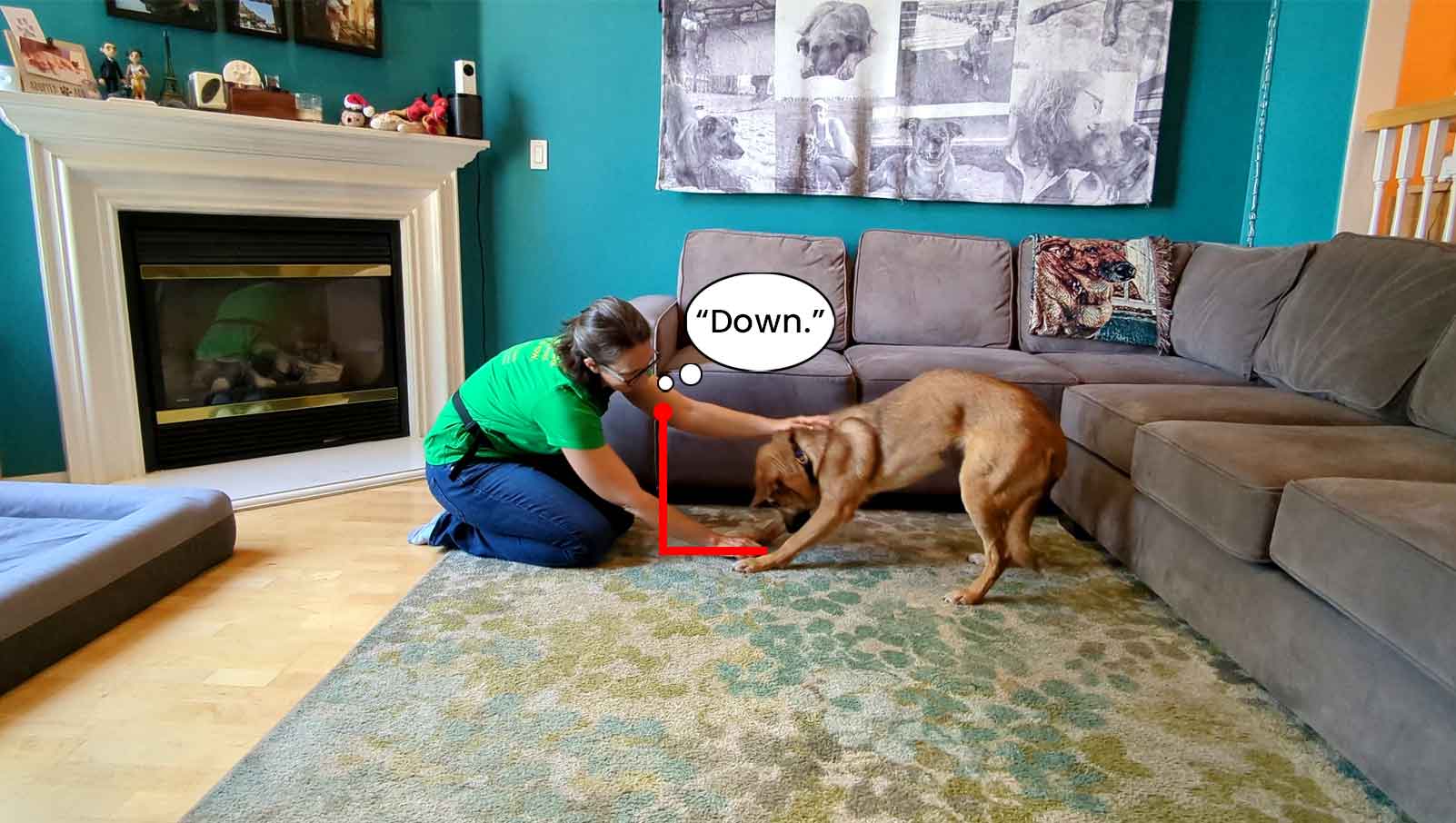
Before you add the cue, “Down”, your dog should be comfortable following a food lure to get into Down, preferably from both Sit and Stand,
Make sure your hand with the treats is closed into a fist so your dog doesn’t see the treats. We want to lure, not bribe, which would only promote your dog not listening to you unless they see their reward.
There are two starting positions when teaching a dog to lay Down: Sit and Stand. The shape of the lure for each position is an “L” but the starting position determines in which direction you draw the “L”.
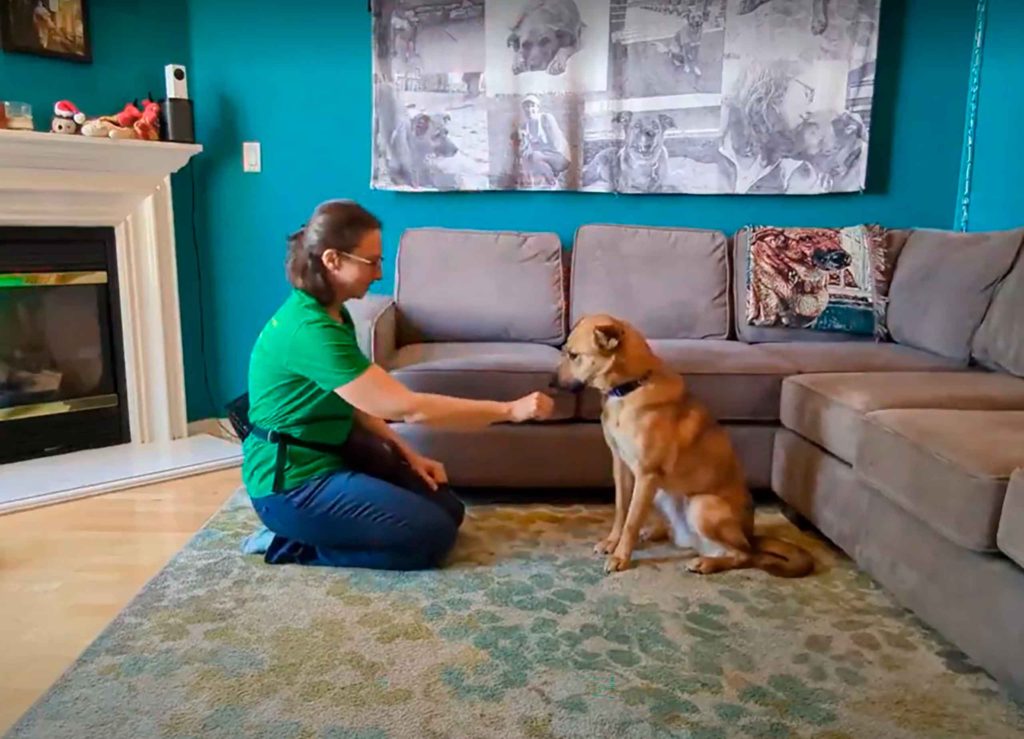
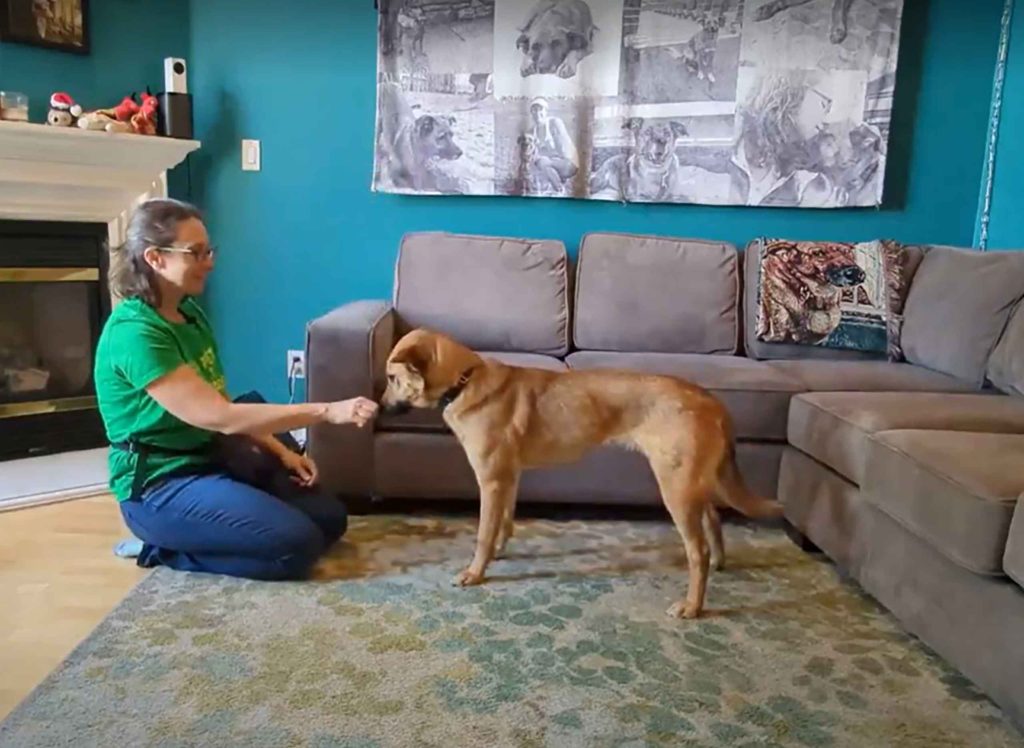
Train Dog To Down Part Two Goal: Your dog follows your food lure and moves from Sit to Down while you say, “Yes” as they begin to lower to the ground, “Down” right before they fully lower to the ground, and “Good” the second they completely lower to the ground, followed by a treat or piece of kibble, then “Break” and a tap on their shoulder.
Tools Needed: Patience (Small) Room with little to no distractions Time (provide your dog with as many short training sessions as they need) Their kibble or small, soft treats prepared into pea-sized pieces Treat pouch Non-slippery surface Your dog’s leash
Words Used: Conditioned reinforcers, “Yes” and “Good”, “Down”, and their release word (“Finish”, “Break”, etc)
Train Dog To Down Part Two Goal: Your dog follows your food lure and moves from Stand to Down while you say, “Yes” as they begin to lower to the ground, “Down” right before they fully lower to the ground, and “Good” the second they completely lower to the ground, followed by a treat or piece of kibble, then “Break” and a tap on their shoulder.
Tools Needed: Patience (Small) Room with little to no distractions Time (provide your dog with as many short training sessions as they need) Their kibble or small, soft treats prepared into pea-sized pieces Treat pouch Non-slippery surface Your dog’s leash
Words Used: Conditioned reinforcers, “Yes” and “Good”, “Down”, and their release word (“Finish”, “Break”, etc)
I’d love to help. Reach out to schedule your complimentary phone consultation so I can learn a bit more about you, your dog, and your dog training goals.
Eugene, Oregon & Online
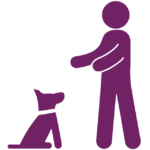
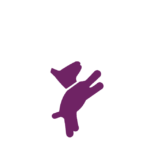
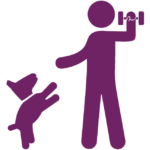

Eugene, Oregon
